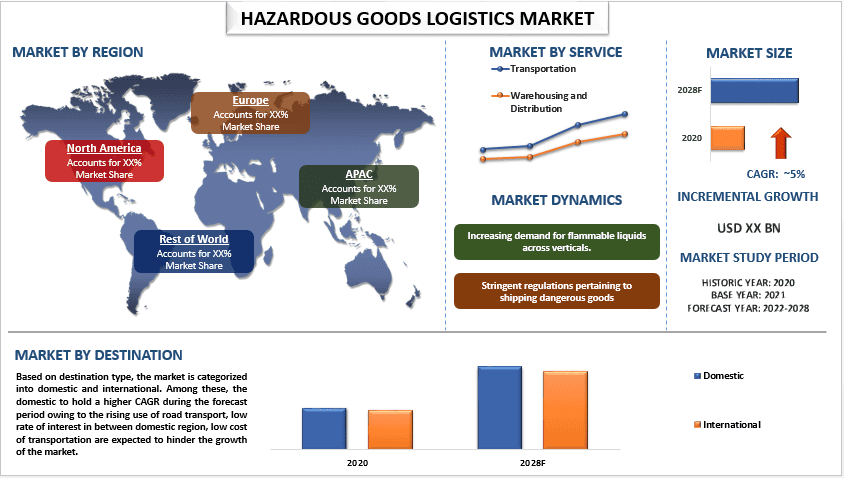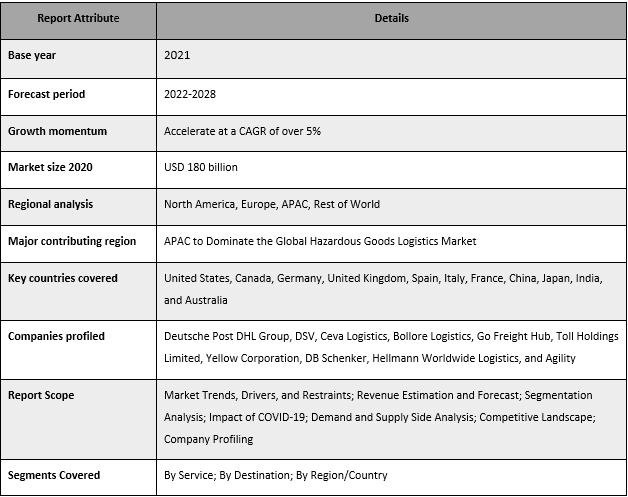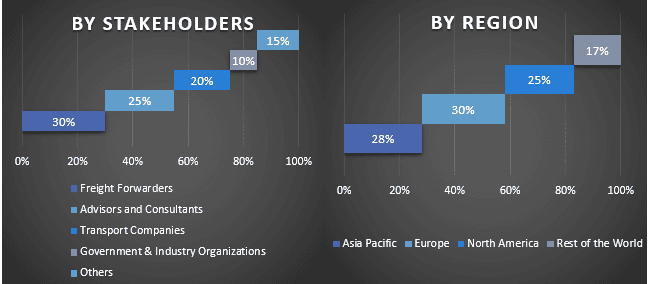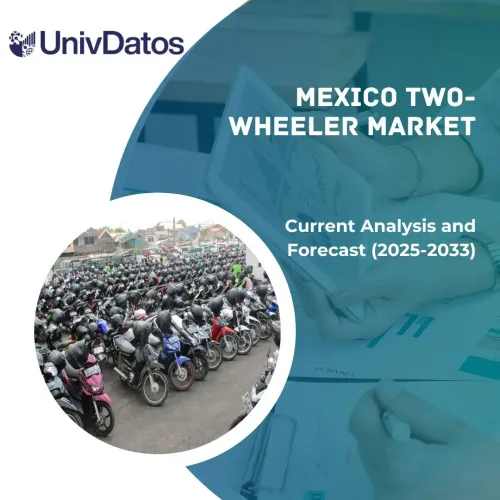- Accueil
- À propos de nous
- Industrie
- Services
- Lecture
- Contactez-nous
Marché de la logistique des marchandises dangereuses : Analyse actuelle et prévisions (2022-2028)
Accent mis sur le service (transport, entreposage et distribution et service à valeur ajoutée) ; Destination (nationale et internationale) ; et Région/Pays

DEMANDER UN EXEMPLE DE PDF GRATUIT
Le marché mondial de la logistique des marchandises dangereuses devrait croître à un rythme important d'environ 5 % au cours de la période de prévision. Les marchandises dangereuses sont constituées de matériaux soumis à des réglementations chimiques qui, lorsqu'ils sont transportés, peuvent présenter un risque pour la santé, les biens, la sécurité et l'environnement. Les marchandises dangereuses représentent une part importante du fret mondial, y compris les matières premières et les produits tels que les batteries et l'essence. L'essor de l'industrie pétrolière et gazière, les règles et réglementations gouvernementales strictes pour le transport des marchandises dangereuses et l'augmentation du transport de médicaments nucléaires, d'échantillons de virus et de produits similaires stimulent la croissance du marché. Par exemple, l'augmentation de la demande pétrochimique aux États-Unis a entraîné une augmentation de la demande de services de camionnage pour le transport de pétrole et de gaz, qui sont des marchandises dangereuses.
Deutsche Post DHL Group, DSV, Ceva Logistics, Bollore Logistics, Go Freight Hub, Toll Holdings Limited, Yellow Corporation, DB Schenker, Hellmann Worldwide Logistics et Agility sont quelques-uns des principaux acteurs du marché. Plusieurs fusions et acquisitions ainsi que des partenariats ont été entrepris par ces acteurs pour faciliter l'accès des clients à des produits/technologies de haute technologie et innovants.
Informations présentées dans le rapport
« Parmi les services, la catégorie transport devrait connaître le TCAC le plus élevé au cours de la période de prévision »
Selon le service, le marché est segmenté en transport, entreposage et distribution et service à valeur ajoutée. Le segment du transport devrait détenir le TCAC le plus élevé et dominer le marché tout au long de la période de prévision. L'exportation et l'importation de marchandises sont importantes pour assurer la sécurité et la sûreté afin de protéger l'environnement et l'infrastructure environnants. Ainsi, le transport de marchandises doit être protecteur, ce qui stimule la croissance du marché.
« Parmi les destinations, le marché intérieur devrait détenir un TCAC plus élevé au cours de la période de prévision »
Selon le type de destination, le marché est classé en national et international. Parmi ceux-ci, le marché intérieur devrait détenir un TCAC plus élevé au cours de la période de prévision en raison de l'utilisation croissante du transport routier, du faible taux d'intérêt entre les régions nationales, du faible coût du transport qui devrait stimuler la croissance du marché.

« L'Europe détiendra une part importante du marché »
En 2020, l'Europe détenait une part importante du marché mondial des produits dangereux. La forte présence de sociétés de fabrication de produits chimiques telles que BASF, Exxon Mobil ; les sociétés pétrochimiques et les centrales nucléaires en Europe ont augmenté le commerce de marchandises dangereuses telles que les produits pétroliers, les produits pétrochimiques, les gaz inflammables, etc. De plus, l'industrialisation rapide et l'augmentation du revenu disponible ont stimulé le besoin de divers produits chimiques, de pétrole brut, de produits pétroliers, etc., ce qui a augmenté la croissance du marché régional.
Raisons d'acheter ce rapport :
- L'étude comprend une analyse de la taille du marché et des prévisions validée par des experts clés authentifiés du secteur.
- Le rapport présente un aperçu rapide de la performance globale de l'industrie en un coup d'œil.
- Le rapport couvre une analyse approfondie des principaux pairs du secteur, en mettant l'accent sur les principaux éléments financiers de l'entreprise, le portefeuille de produits, les stratégies d'expansion et les développements récents.
- Examen détaillé des moteurs, des contraintes, des principales tendances et des opportunités qui prévalent dans l'industrie.
- L'étude couvre de manière exhaustive le marché à travers différents segments.
- Analyse approfondie au niveau régional de l'industrie.
Options de personnalisation :
Le marché mondial de la logistique des marchandises dangereuses peut être davantage personnalisé selon les besoins ou tout autre segment de marché. En outre, UMI comprend que vous pouvez avoir vos propres besoins commerciaux, alors n'hésitez pas à communiquer avec nous pour obtenir un rapport qui répond parfaitement à vos besoins.
Table des matières
Méthodologie de recherche pour l'analyse du marché de la logistique des marchandises dangereuses (2022-2028)
L'analyse du marché historique, l'estimation du marché actuel et la prévision du marché futur du marché mondial de la logistique des marchandises dangereuses ont été les trois principales étapes entreprises pour créer et analyser l'adoption de la logistique des marchandises dangereuses dans les principales régions du monde. Une recherche secondaire exhaustive a été menée pour collecter les chiffres du marché historique et estimer la taille actuelle du marché. Deuxièmement, pour valider ces informations, de nombreuses conclusions et hypothèses ont été prises en considération. De plus, des entretiens primaires exhaustifs ont également été menés avec des experts de l'industrie à travers la chaîne de valeur du marché mondial de la logistique des marchandises dangereuses. Après la supposition et la validation des chiffres du marché par le biais d'entretiens primaires, nous avons utilisé une approche descendante/ascendante pour prévoir la taille complète du marché. Par la suite, des méthodes de ventilation du marché et de triangulation des données ont été adoptées pour estimer et analyser la taille du marché des segments et sous-segments de l'industrie concernée. Une méthodologie détaillée est expliquée ci-dessous :
DEMANDER UN EXEMPLE DE PDF GRATUIT
Analyse de la taille du marché historique
Étape 1 : Étude approfondie des sources secondaires :
Une étude secondaire détaillée a été menée pour obtenir la taille du marché historique du marché de la logistique des marchandises dangereuses à partir de sources internes à l'entreprise telles que les rapports annuels et les états financiers, les présentations de performance, les communiqués de presse, etc., et de sources externes, notamment les revues, les actualités et articles, publications gouvernementales, publications des concurrents, rapports sectoriels, base de données tierce et autres publications crédibles.
Étape 2 : Segmentation du marché :
Après avoir obtenu la taille du marché historique du marché de la logistique des marchandises dangereuses, nous avons mené une analyse secondaire détaillée pour recueillir des informations sur le marché historique et les partager pour différents segments et sous-segments pour les principales régions. Les principaux segments inclus dans le rapport sont le type de service et la destination. De plus, des analyses au niveau des pays ont été menées pour évaluer l'adoption globale des modèles de test dans cette région.
Étape 3 : Analyse factorielle :
Après avoir acquis la taille du marché historique des différents segments et sous-segments, nous avons mené une analyse factorielle détaillée pour estimer la taille actuelle du marché de la logistique des marchandises dangereuses. De plus, nous avons effectué une analyse factorielle à l'aide de variables dépendantes et indépendantes telles que le type de service et la destination de la logistique des marchandises dangereuses. Une analyse approfondie a été menée pour les scénarios de demande et d'offre en tenant compte des principaux partenariats, fusions et acquisitions, de l'expansion des activités et des lancements de produits dans le secteur de la logistique des marchandises dangereuses à travers le monde.
Estimation et prévision de la taille actuelle du marché
Taille actuelle du marché : sur la base des informations exploitables des 3 étapes ci-dessus, nous sommes arrivés à la taille actuelle du marché, aux principaux acteurs du marché mondial de la logistique des marchandises dangereuses et aux parts de marché des segments. Tous les pourcentages de parts requis, les divisions et les ventilations du marché ont été déterminés à l'aide de l'approche secondaire susmentionnée et ont été vérifiés par des entretiens primaires.
Estimation et prévision : pour l'estimation et la prévision du marché, des pondérations ont été attribuées à différents facteurs, notamment les moteurs et les tendances, les contraintes et les opportunités offertes aux parties prenantes. Après avoir analysé ces facteurs, des techniques de prévision pertinentes, c'est-à-dire l'approche descendante/ascendante, ont été appliquées pour arriver à la prévision du marché pour 2028 pour différents segments et sous-segments sur les principaux marchés mondiaux. La méthodologie de recherche adoptée pour estimer la taille du marché comprend :
- La taille du marché de l'industrie, en termes de revenus (USD) et le taux d'adoption du marché de la logistique des marchandises dangereuses sur les principaux marchés nationaux
- Tous les pourcentages de parts, les divisions et les ventilations des segments et sous-segments de marché
- Les principaux acteurs du marché mondial de la logistique des marchandises dangereuses en termes de produits offerts. De plus, les stratégies de croissance adoptées par ces acteurs pour être compétitifs sur le marché en croissance rapide
Validation de la taille et de la part du marché
Recherche primaire : des entretiens approfondis ont été menés avec les principaux leaders d'opinion (KOL), y compris les cadres supérieurs (CXO/VP, chef des ventes, chef du marketing, chef des opérations, chef régional, chef de pays, etc.) dans les principales régions. Les conclusions de la recherche primaire ont ensuite été résumées et une analyse statistique a été effectuée pour prouver l'hypothèse énoncée. Les contributions de la recherche primaire ont été consolidées avec les conclusions secondaires, transformant ainsi l'information en informations exploitables.
Répartition des participants primaires dans différentes régions

Ingénierie du marché
La technique de triangulation des données a été utilisée pour compléter l'estimation globale du marché et pour arriver à des chiffres statistiques précis pour chaque segment et sous-segment du marché mondial de la logistique des marchandises dangereuses. Les données ont été divisées en plusieurs segments et sous-segments après avoir étudié divers paramètres et tendances dans les domaines du service et de la destination sur le marché mondial de la logistique des marchandises dangereuses.
L'objectif principal de l'étude du marché mondial de la logistique des marchandises dangereuses
Les tendances actuelles et futures du marché mondial de la logistique des marchandises dangereuses ont été mises en évidence dans l'étude. Les investisseurs peuvent obtenir des informations stratégiques pour fonder leur discrétion en matière d'investissements sur l'analyse qualitative et quantitative effectuée dans l'étude. Les tendances actuelles et futures du marché ont déterminé l'attractivité globale du marché au niveau régional, offrant une plate-forme permettant au participant industriel d'exploiter le marché inexploité afin de bénéficier d'un avantage de premier plan. Les autres objectifs quantitatifs des études comprennent :
- Analyser la taille actuelle et prévue du marché de la logistique des marchandises dangereuses en termes de valeur (USD). Analysez également la taille actuelle et prévue du marché des différents segments et sous-segments
- Les segments de l'étude comprennent les domaines du type de service et de la destination.
- Définir et analyser le cadre réglementaire de la logistique des marchandises dangereuses
- Analyser la chaîne de valeur impliquée avec la présence de divers intermédiaires, ainsi qu'analyser les comportements des clients et des concurrents de l'industrie.
- Analyser la taille actuelle et prévue du marché de la logistique des marchandises dangereuses pour la région principale.
- Les principaux pays des régions étudiées dans le rapport comprennent l'Asie-Pacifique, l'Europe, l'Amérique du Nord et le reste du monde.
- Profils d'entreprise du marché de la logistique des marchandises dangereuses et stratégies de croissance adoptées par les acteurs du marché pour se maintenir sur le marché en croissance rapide
- Analyse approfondie au niveau régional de l'industrie
Connexes Rapports
Les clients qui ont acheté cet article ont également acheté










